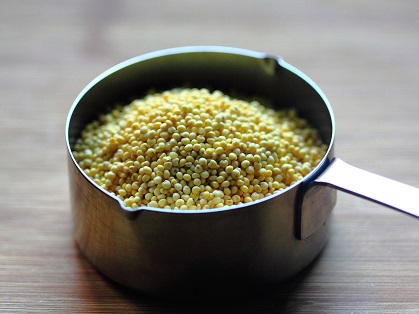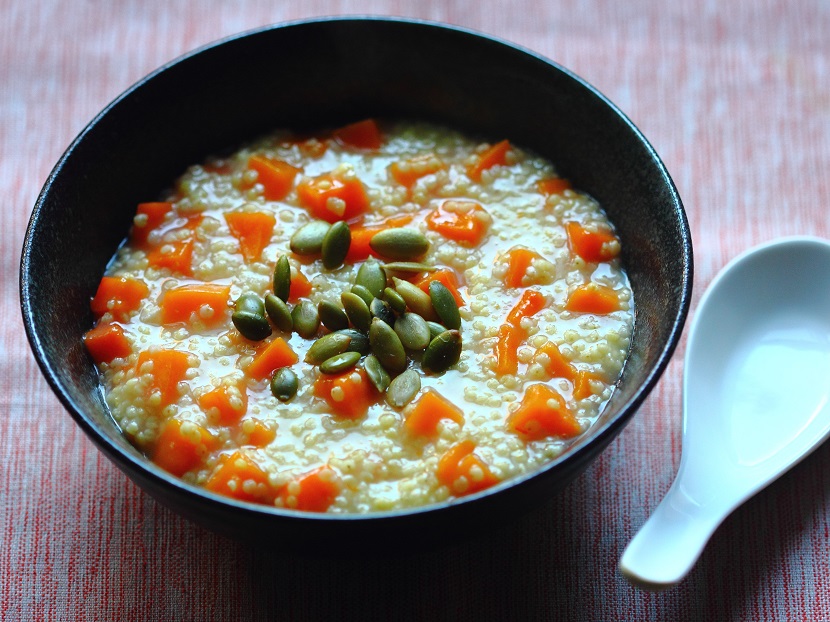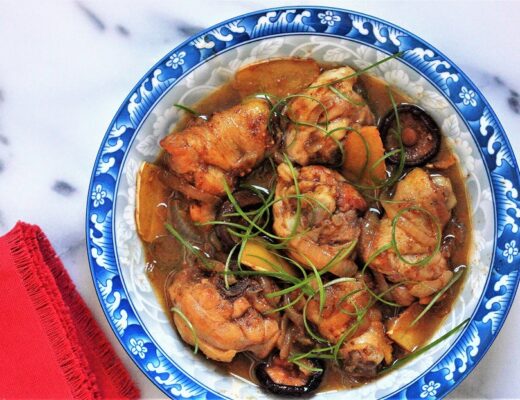Last Updated on September 18, 2020 by Simon Fan
In recent years, millet, an ancient grain, has been rediscovered in the West as a powerful superfood, the same recognition bestowed on several other heritage grains such as amaranth, sorghum, and quinoa. Some even call it “the new quinoa.”
That does not surprise me, because millet is rich in protein, fiber, iron, B vitamins, manganese, phosphorus, and magnesium. Its delicate corn-like flavor and light texture when cooked make it a versatile ingredient for salads, pilafs, soups, stews, porridges, and even desserts.
 With high productivity, short growing season, and minimal need for watering, millet is also good for the environment.
With high productivity, short growing season, and minimal need for watering, millet is also good for the environment.
Millet has been cultivated in China for over 10,000 years. In 2005, archaeologists discovered a 4,000-year-old bowl of noodles made with millet near the Yellow River. Called xiao mi (小米) in Mandarin, it remains a food staple in northern China, where it thrives in dry conditions. The most common way of cooking millet is to make porridge (xia mi zhou 小米粥), by itself or mixed with other grains, beans, sweet potatoes, or any type of winter squash.
I like to use butternut squash for my millet porridge as shown in the recipe below. Butternut squash enhances the aroma and mild sweetness of the porridge and adds a dose of autumn color. This porridge makes a perfect light dinner when paired with stir-fried vegetables.
Feel free to tweak the recipe with a savory route, by using chicken or vegetable stock instead of water and seasoning the porridge lightly with salt. Or you can add some honey or maple syrup to satisfy your sweet tooth.
You can find millet at gourmet grocery stores and most Asian food markets. Choose organic ones if available.
Millet porridge with butternut squash
Serves 2
Ingredients
½ cup (110 g) millet
2 cups (480 ml) water
8 oz (230 g) butternut squash, peeled and cut into ½-inch (1.3 cm) cubes
Toasted pumpkin seeds as garnish (optional)
Directions
- Add the millet and water to a pot. Bring to a boil, then reduce the heat to maintain a gentle simmer. Cover and cook for 10 minutes.
- Add the butternut squash. Stir to mix and slightly turn up the heat. Once the mixture reaches a boil, reduce to heat to maintain a gentle simmer again. Cover and cook, stirring from time to time to prevent the millet from sticking to the bottom of the pot and adding a bit water if the mixture gets too thick or if you prefer a soupier porridge, until the butternut squash is soft, 15 to 20 minutes.
- Serve hot or warm, and garnish with the pumpkin seeds.



